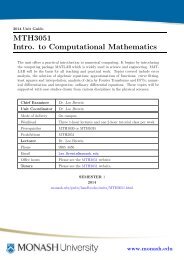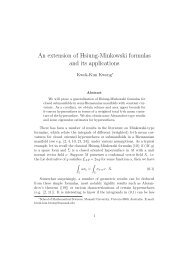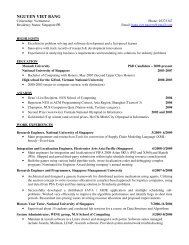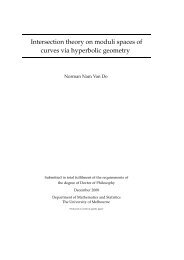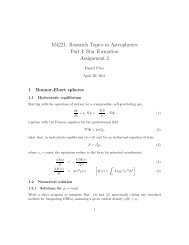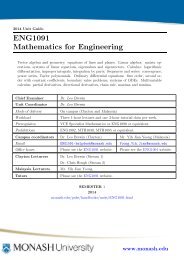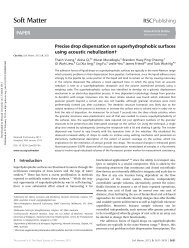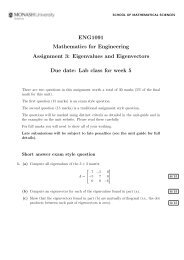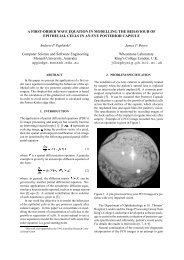MTH3051 Introduction to Computational Mathematics - User Web ...
MTH3051 Introduction to Computational Mathematics - User Web ...
MTH3051 Introduction to Computational Mathematics - User Web ...
You also want an ePaper? Increase the reach of your titles
YUMPU automatically turns print PDFs into web optimized ePapers that Google loves.
School of Mathematical Sciences<br />
Monash University<br />
n = 100; % set number of terms<br />
sum = 0; % set initial value for sum<br />
sign = 1; % an integer +/- 1<br />
for k = 1 : n<br />
% loop over k from 1 <strong>to</strong> n<br />
term = sign/(2*k-1); % compute the term<br />
sum = sum + term; % update rolling sum<br />
sign = - sign; % flip the sign<br />
end;<br />
disp(n);<br />
% print n<br />
disp(4*sum);<br />
% print the approximation <strong>to</strong> π<br />
disp(4*sum-pi);<br />
% print the error<br />
This is an example of Matlab syntax. Matlab is a programming language well suited<br />
<strong>to</strong> numerical computations. There are many other languages such as Fortran, C, Java,<br />
Maple and Mathematica. They all have a similar flavour and they all serve the one<br />
purpose of getting the computer <strong>to</strong> do useful work for us. We will use Matlab throughout<br />
this course as it is (arguably) the easiest <strong>to</strong> learn for someone with no programming<br />
experience. But don’t let this s<strong>to</strong>p you from learning about other programming languages<br />
(in your spare time).<br />
In reading the above code you must keep in mind one extremely important fact the<br />
equals sign is not what you might expect it <strong>to</strong> be. The computer will treat the equal<br />
sign (usually) as a replacement opera<strong>to</strong>r. Thus in executing a line like x = 2*y the<br />
computer will first evaluate the right-hand side then assign that value <strong>to</strong> the left-hand<br />
side. Whatever value x had before, it will be wiped out. Its value after the line is<br />
executed will be 2*y. This use of the equals sign allows us <strong>to</strong> write lines like x = x +<br />
1 <strong>to</strong> increment the current value of x by 1. In contrast, if you showed a mathematician<br />
a line like x = x + 1 he or she would look at you very very strangely (why?).<br />
The above Matlab code is fairly easy <strong>to</strong> read. The first three lines set initial values <strong>to</strong><br />
various symbols (aka variables). Then we encounter a for-loop. Matlab will repeat the<br />
code in this loop for each value of k from 1 <strong>to</strong> n in strict order. Each time through this<br />
loop we are calculating one term in the series. After the loop finishes we print out the<br />
various numbers that interest us (using the Matlab command disp which is short for<br />
display ).<br />
If the above code baffles you then one way <strong>to</strong> understand it is <strong>to</strong> pretend you are the<br />
computer and follow the Matlab commands. Get out a pencil and paper and start<br />
following the instructions. Work your way through the first 5 or so terms. You should<br />
see that it is correct and does compute the series.<br />
16-Feb-2014 10



